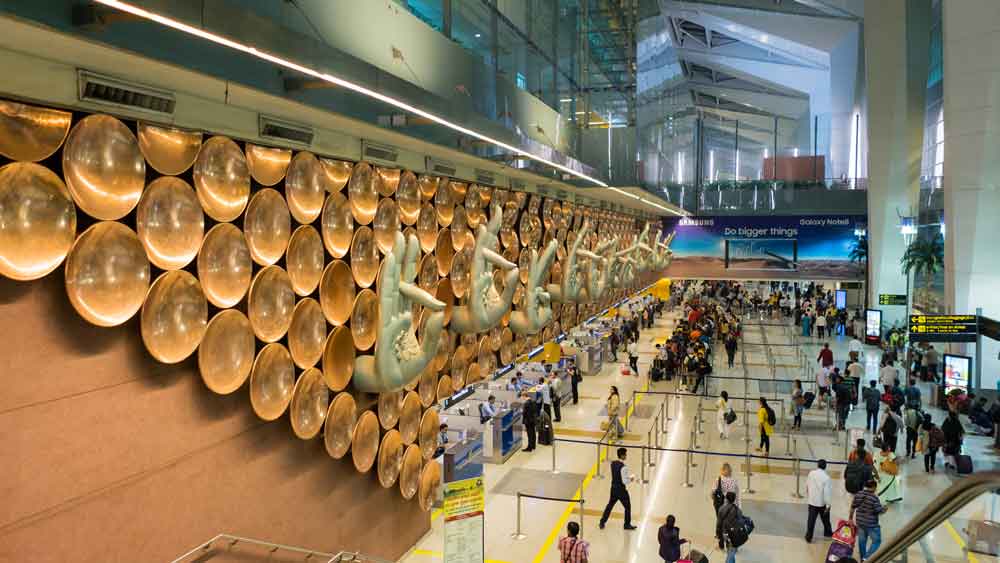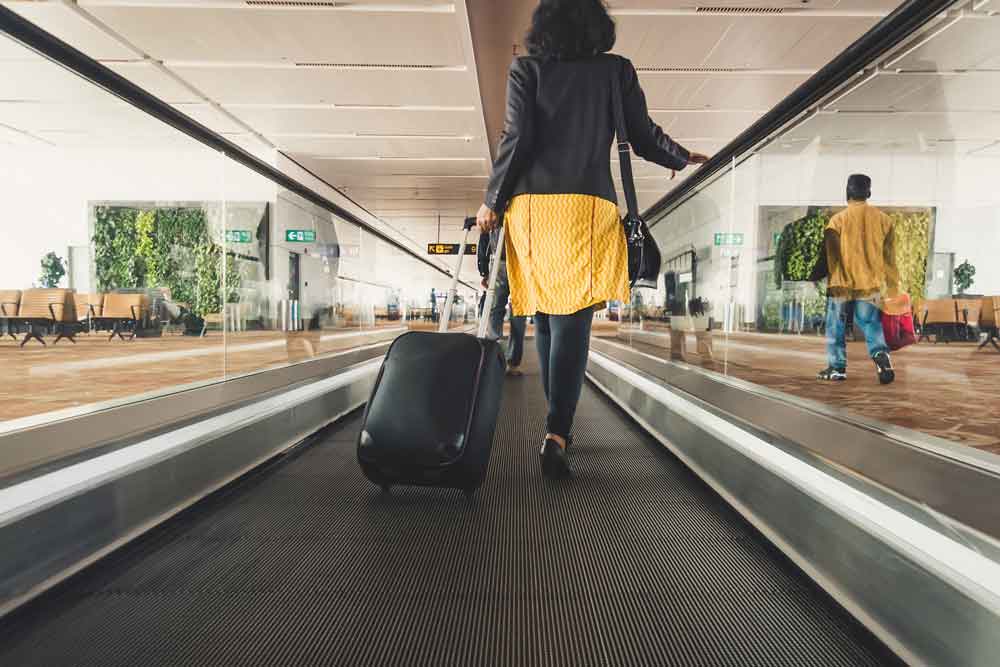Airports are not just meant to help transport you from one destination to another. In fact, a few hours at the airport can give a kaleidoscopic view of life, as different people can be seen exhibiting different emotions. Either someone is bidding farewell to their loved ones, or someone is eagerly awaiting the arrival of the flight of their beloved. With time, the number of passengers at the airport has also increased, and the overall appearance of the airport underwent a transformation too. As far as the major changes in the airports in the last few years are concerned, the majority of the discussion is centred on the incorporation of technology, changes in facilities and the addition of sustainability as a factor.
Taking a flight, a few decades back was considered to be quite a glamorous way of travelling, which could be afforded by just a few. But travelling by flight has today become common due to better affordability, connectivity and the overall income of the salaried citizen has also gone up. Moreover, people today want to cut down on the time needed to travel from one place to another, hence choosing flights over trains. The number of flight services has gone up to meet this demand.
Making Air Travel More Sustainable
Previously, the boarding tickets provided to the passengers were mostly paper documents that were issued and checked by the agents guarding the gates. There used to be a large and constantly growing crowd at the check-in counters at the airports, where passengers gathered to get their documents cleared before heading off to their respective flights. However, now, the entire process has become more convenient and time-savvy for the passengers with the availability of mobile applications and help kiosks from where the entire process of clearing the documents can be accomplished. What’s more, this method is sustainable and eco-friendly too simply by the virtue of being paperless.
Printed tickets and paper documents might still be in use, but a majority of the passengers try the hassle-free e-tickets, which can be booked from their phones in a matter of under a minute, and that too without having to stand in the serpentine queue. With traditional advertising boards making way for digitised information setups, finding out the correct route to the destination has become rather passenger-friendly. Not only are they provided with immediate assistance in the event of any discomfort, but thanks to the augmented security at the airports, they are also able to clear the security checks very easily with the digital setups equipped with automated facial, QR and other forms of recognition. Further, the entire corridor of the airport is now covered with screens where the constant updates of the timings of the flights are flashed to ensure the passengers stay updated.
What is perhaps even more heartening is the fact that airport designs, administration and management is now being done keeping sustainability in mind. A case in point is the recent announcement made by Mumbai’s Chhatrapati Shivaji Maharaj International Airport (CSMIA). The airport authorities announced that it has successfully switched to green sources for its energy consumption needs, making it one of India’s 100 per cent sustainable airports. With the launch of hybrid technology, CSMIA was the first airport in India to solely run on green energy since April 2022 by procuring five per cent electricity from onsite solar generation, and the remaining 95 per cent from offsite green sources like hydro and wind energy. By August 2022, the CSMIA attained 100 per cent utilisation of renewable sources of energy for all its needs, keeping its vision for a Net Zero Carbon Emission goals by 2029 in mind. Other sustainably run airports of India which are also using green sources of energy include:
1. Netaji Subhash Chandra Bose International Airport, Kolkata
2. Chennai International Airport, Chennai
3. Thiruvananthapuram International Airport
4. Sardar Vallabh Bhai Patel International Airport, Ahmedabad
5. Lokpriya Gopinath Bordoloi International Airport, Guwahati
6. Chandigarh International Airport
7. Indira Gandhi International Airport, Delhi
8. Rajiv Gandhi Hyderabad International Airport
9. Kempegowda International Airport, Bengaluru
10. Cochin International Airport, Kochi (Private)

Airports As Destinations
Modern architecture, world-class amenities, spaces designed to keep customer comforts and tourism in mind—all of these facilities have now transformed airports into destinations rather than just another “station” you pass through. Many airports have been refurnished to look like art museums. One such major example is the Suvarnabhumi International Airport located in Thailand, which has been designed in such a way that the entire area is always glowing in natural sunlight. Not only does it give a very posh feeling to the ambience of the airport, but also provides a lot of breathing space for the passengers to relax before they are ready to board their flights.
The same goals have seen the renovations of some of the busiest airports of India too. The CSMIA and the Indira Gandhi International Airport, Delhi, for example, not only have art installations that hold the crowds’ attention, but also exhibit local arts, handicrafts and musical or dance forms to prove that they are gateways to tourism experiences you shouldn’t miss. On the other hand are airports which are using their local terrain to the hilt to add to the destination’s allure and giving tourists an introduction to local scenery. The Kushok Bakula Rimpochee Airport, Ladakh, Gaggal Airport, Kangra, Bhuj Airport, Kutch, and the Agatti Aerodrome, Lakshadweep, are prime examples of these.

Airports And Flights Are Now More Inclusive Too
Overall, not only the look of the airports has changed along with its functionalities in different departments, but the outlook that travelling by flight is a display of an aristocratic or patriarchal way of living has also ebbed away. There is a definitive change in perspective towards the flight attendants who were previously referred to only as air hostesses. Not only did this suggest that the job of providing this particular service and “care work” was limited to women, but also suggested that men shouldn’t do these “feminine” jobs. Similarly, there was a serious dearth of women commercial pilots in the field before. Now, 12.4 per cent of Indian airline pilots are women—and the nation actually surpasses the global average for women pilots, which is 5.8 per cent. This data from the International Society of Women Airline Pilots shows that India is not only making its airline services more inclusive, but also paving the way on the global front as a changemaker.
But that’s not all. All major airports are now disability-friendly, with the addition of ramps, walkways and roomier bathrooms—apart from airport assistance for the disabled and the elderly by trained staff. While the lack of complete sensitisation still leads to situations where persons with disabilities face issues, things have definitely improved for the better, and all we need to improve on is the pace of development and getting more of society on board. In recent times, airlines like Vistara and AirAsia have also launched gender-neutral titles on their booking platforms, paving the way for better inclusion of the LGBTQIA+ community. In an effort to break gender stereotypes further, Kempegowda International Airport added diaper-change facilities in the men’s bathrooms as well—indicating that caring for a child is not just a woman’s responsibility.
For decades, airports have been beyond the reach of many, and not just because of affordability. With current and continuous transformations that keep the planet and all the people living on it in mind, airports have now become not just an extension of a tourist’s experience but one that inspires them—to travel, to think beyond the journey alone, to care for the planet and fellow humans, all at the same time.